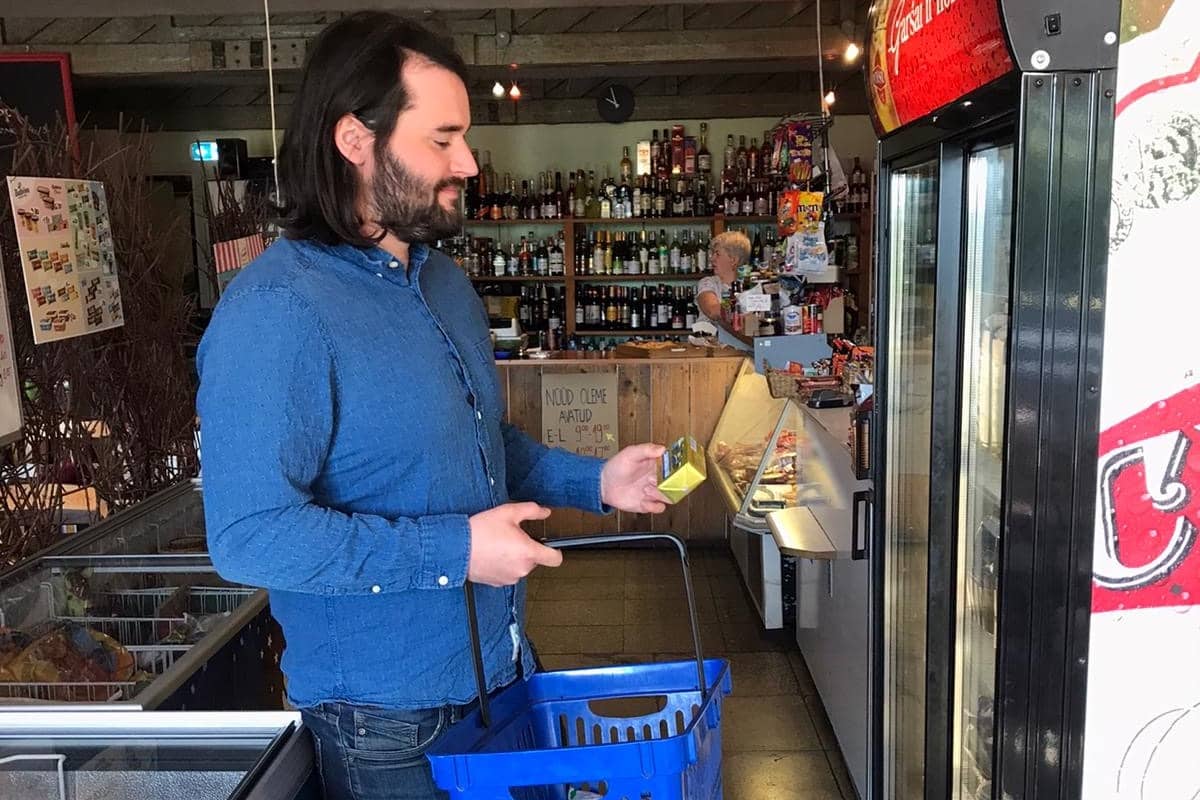How watching Õnne 13 helped me learn Estonian
Learning Estonian can bring with it periods of discouragement, and gathering the motivation to continue learning can be difficult. Studying with textbooks or online courses made the process more difficult for me because I was neither interested nor having fun with these methods.
Enjoying yourself while learning a language is one of the best ways to achieve good results. A study from The Journal of Experimental Education showed that when a professor included humour in their lessons, students had higher final exam scores than students who did not receive lessons taught with humour.
My main motivating factor in learning Estonian is to be able to participate more fully in Estonian society and to better understand the country I am living in. However, I have also made an effort to stay interested in the language and keep the language learning process relaxed and fun, so that I can stay motivated.
The importance of starting small: my first words in Estonian
My introduction to Estonian began in the shops and streets of Tallinn. When visiting a foreign country, one of my favourite things to do is shop at grocery stores and discover the local food. When I first arrived in Estonia, I had the pleasure of discovering ‘kohuke’, ‘rukkikama’ and ‘kali’, to name but a few. I spent a lot of time in grocery stores reading labels and discovering new words for milk and bread. It is much easier to retain information when there is an emotional attachment to learning, and these enjoyable trips to a local Rimi made learning interesting, and helped me form a basic vocabulary.

Going to and from work every day, I took the bus along Pärnu maantee, travelling from the city centre to Nõmme. I made a habit of looking at billboards and signs, and using Google Translate to see exactly what was being said around me. Not understanding something can sometimes be nice, especially when it comes to annoying advertisements. However, not understanding street signs, billboards and names of basic food items made me feel like a stranger. By beginning to recognise what simple signs and advertisements were saying, it became easier to understand what was going on around me. A notable advantage of learning a language of a foreign country is that it simply becomes possible to see what others around you are also seeing.
The most challenging aspects of learning Estonian
On paper, Estonian is relatively straightforward. Each word can be clearly identified and pronunciation is simple for the most part. In my experience, reading and listening to Estonian are entirely different skills. It sounds to me like Estonians speak fast, trying to fit as many words into one breath as possible. It’s not always clear where one word ends and another begins, and it is quite easy to get stuck trying to pick one word out from a sea of syllables.
For example, when I first began learning Estonian, I quickly learned the phrase ‘mis sa teed’, meaning ‘what are you doing’ in English. However, it took months until I could distinguish this phrase being spoken by Estonians. ‘Mis sa teed’ sounded more like ‘misaded’ to me. The same expressions were “I don’t know”, which sounded like “maitea”, and “what is it”, which sounded more like “miseion” to my ears. As a beginner, a lot of the Estonian language sounded like this.
Without distinct pauses between words, understanding a language can feel like decoding exercise, and spending so much time and effort on identifying individual words makes it nearly impossible to understand a complete sentence.
The role of Õnne 13 in my journey to learning Estonian
Since understanding spoken Estonian was the biggest challenge for me, I decided to learn Estonian through the television. I have been watching Estonian TV with Estonian subtitles. The show I generally watch is the Estonian TV drama, Õnne 13. I started viewing it after I was told that some other foreigners have had success learning the language through by watching the show.
Here are some things that I have learned from the show:
Mastering interjections in Estonian
Until I watched the show, I didn’t recognise words like ‘nii’ ‘oota’ and ‘nojah’ when they were used. Along with ‘Issand Jumal’ I get the feeling that these words are overused in Õnne 13. However, watching the show has helped me understand their place in conversations and made it easier to pick out these words.
Even though these are simple words I think they are nonetheless important ones, and understanding them helps me understand Estonian conversation more fully. Hearing them gives me a sense of familiarity and reassurance that I at least understand something.
Making meaning through context
Learning a language by listening to the conversation of others can be extremely difficult. One-on-one conversations are easier, but if the learner loses track of the topic, then it’s hard to re-establish an understanding of the conversation.
One of the benefits of learning through TV shows is that the context is more obvious. The storylines are simple and predictable and it is therefore relatively easy to fill the gaps compared with doing so during everyday conversations.
The predictable conversations make it easy to understand things from the context and to learn new words.
Exploring different styles of speaking
Watching Õnne 13 and getting to know the different characters has helped me to understand the different styles of speaking among Estonians. I frequently forget that there are different ways of speaking Estonian, but of course there may be some people that even Estonians have trouble understanding, just like there are English speakers that are hard for me to understand.
Although the show may seem mundane to some Estonians, from the perspective of a foreigner, the characters have many nuances that are interesting to observe and learn from.
For example, Allan Peterson speaks in a monotone voice without moving his lips and is often mumbling words. If I was to talk in person to this character it would be very difficult.
Older characters, like Kristan and Laine, speak slowly and pronounce words very clearly, making them simpler to understand. In my own experience, I have also found talking with the older generation of Estonians easier, because they talk more slowly and with more spaces between words.
All characters have their own unique qualities in regard to speech. If I am able to see these characteristics in people I meet in everyday situations, then I feel like I have grasped an important nuance of the language.
Overall, I feel like watching Õnne 13 has given me a glimpse into Estonian conversation that would have been hard to achieve otherwise. The everyday nature of the show and exaggerated expressions of some of the characters make it easy to understand for a foreigner learning Estonian.
Although I have some concerns that I will end up talking like the characters from the show, I am glad that I have found this way of learning Estonian.
Last thoughts
In my opinion, a mix of learning techniques and constant experimentation is important, at least to keep the learning process interesting. A textbook may hold a wealth of knowledge, but it might not provide the fun and excitement needed to stay motivated and retain information. Estonian is a challenging language to learn, but that makes it more rewarding too.

